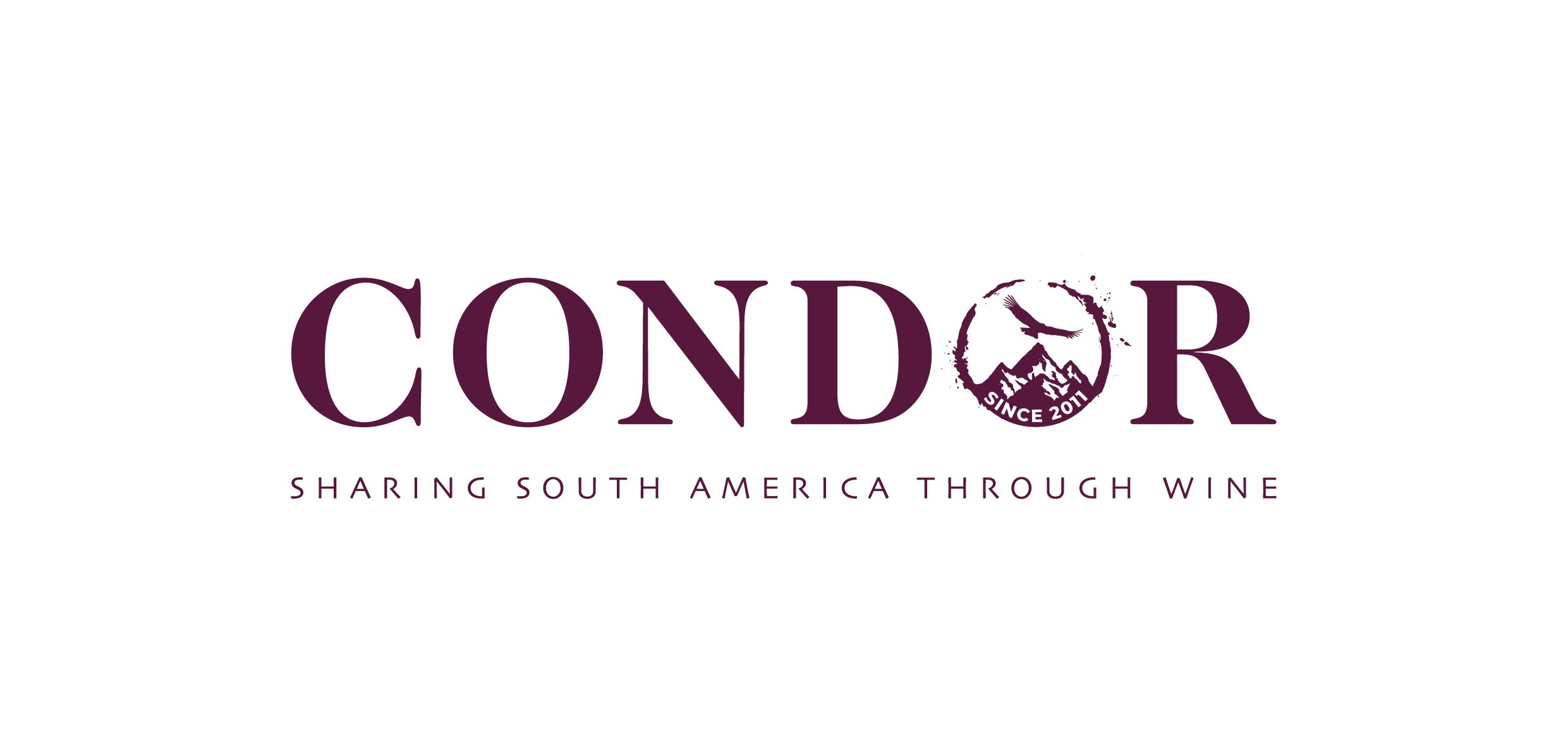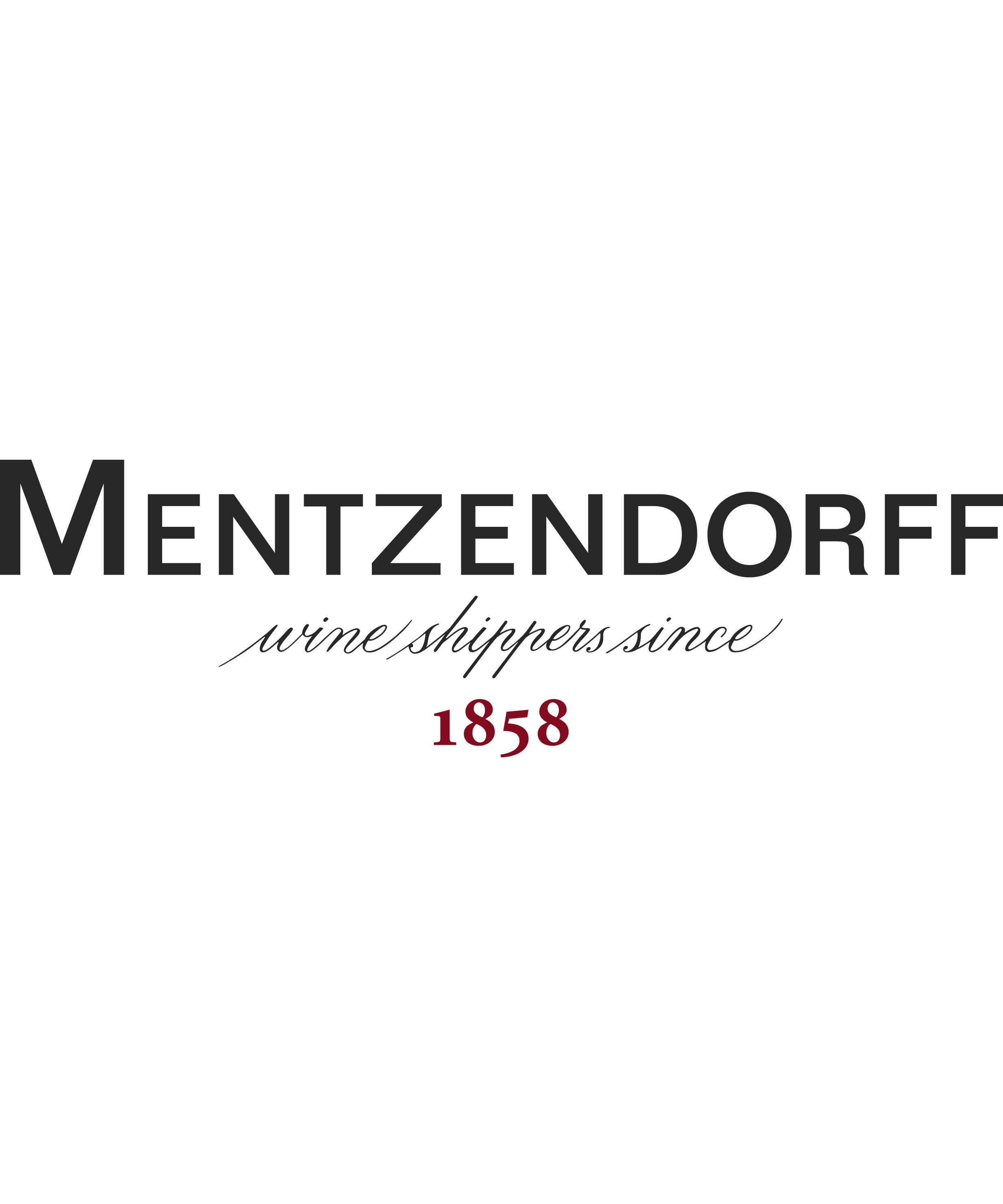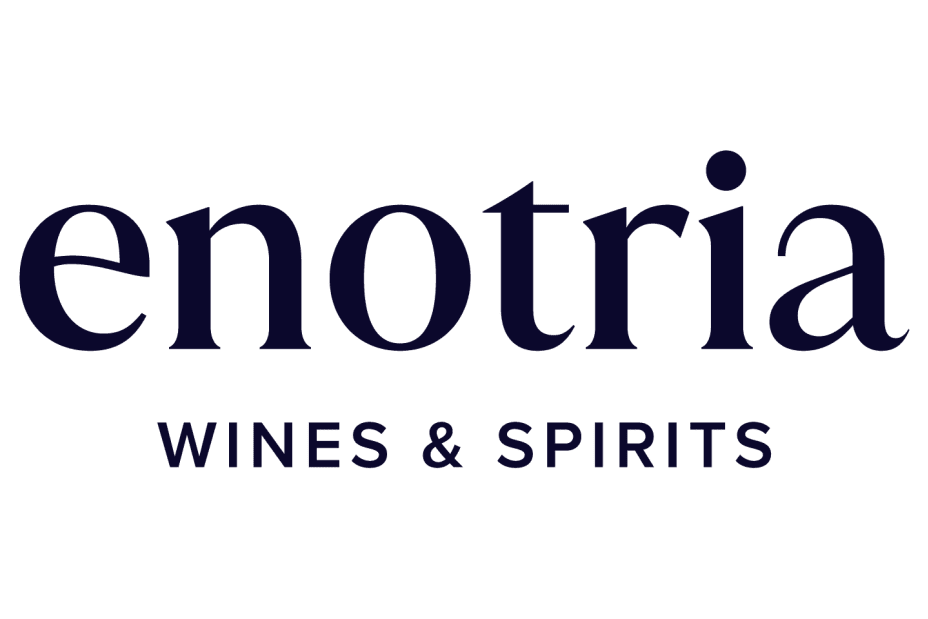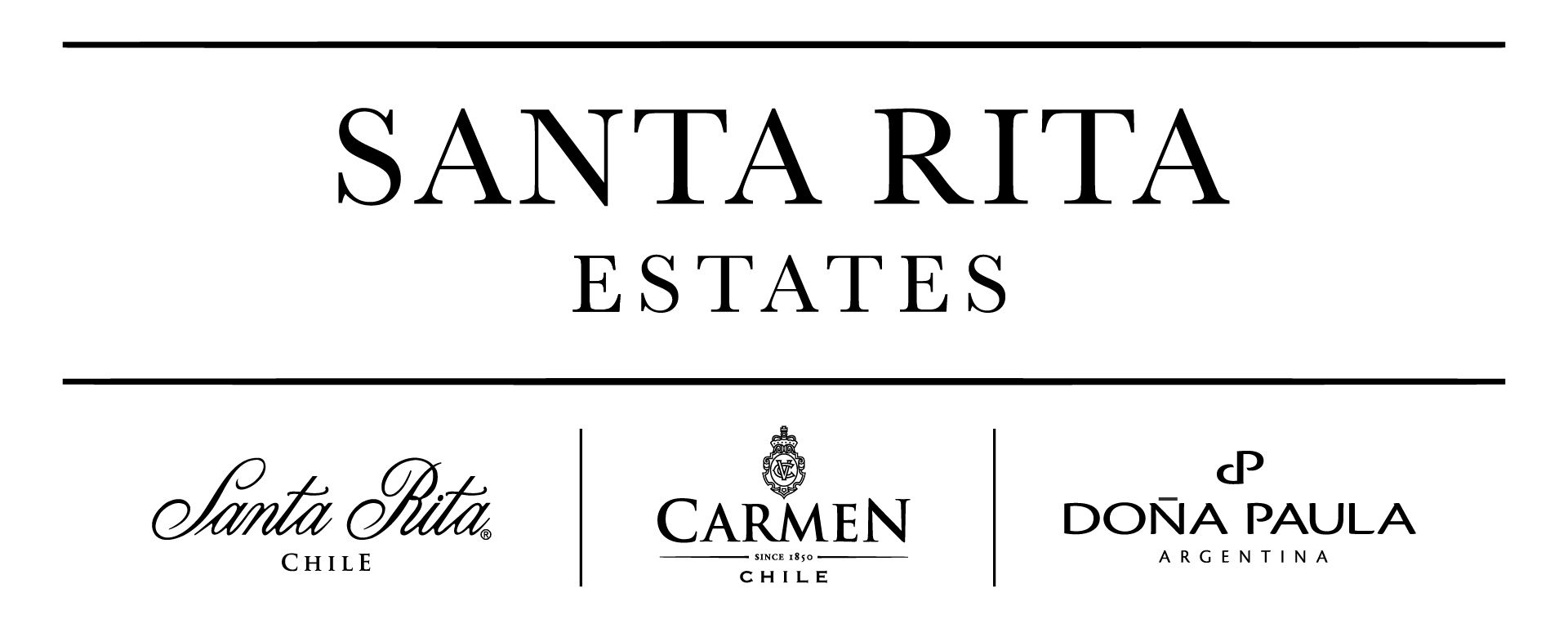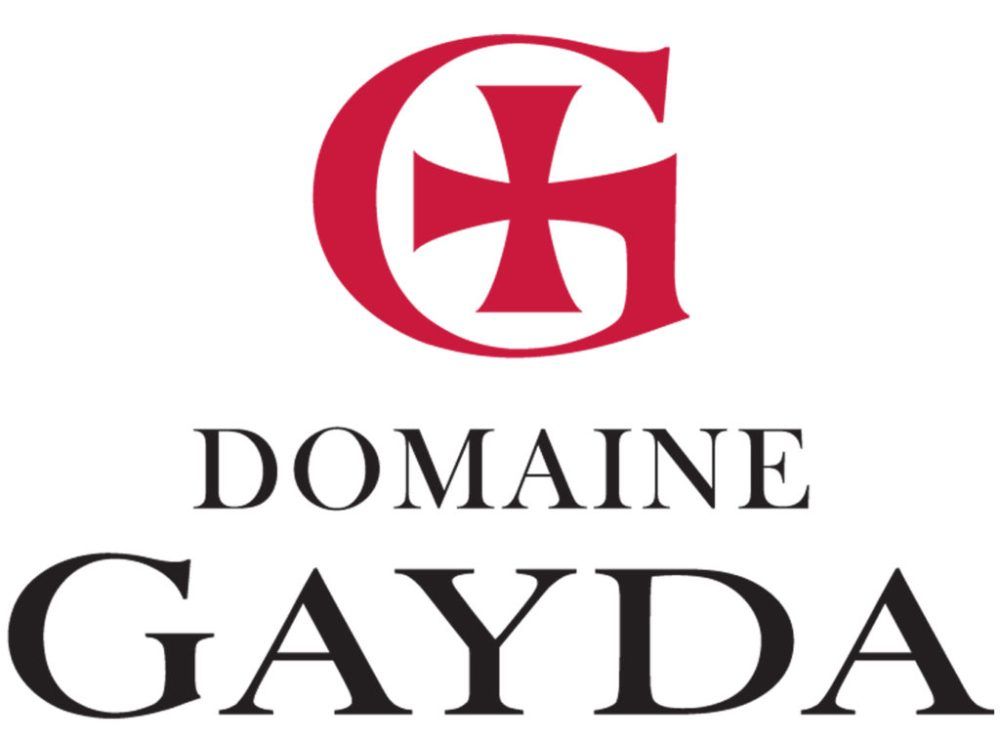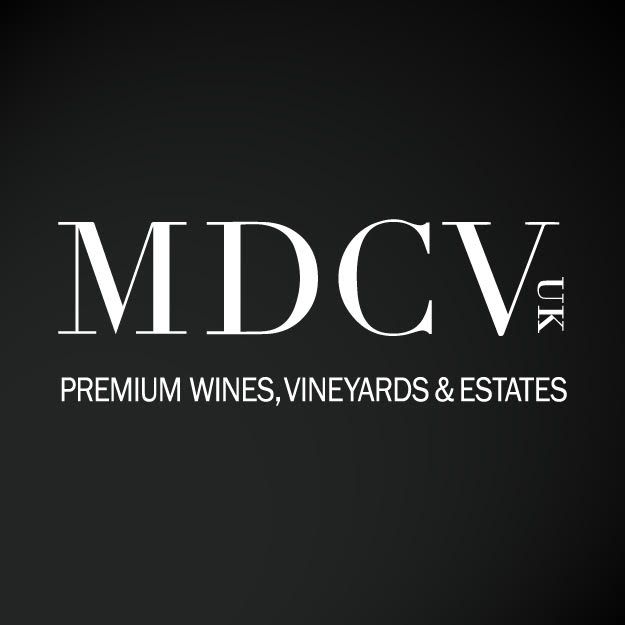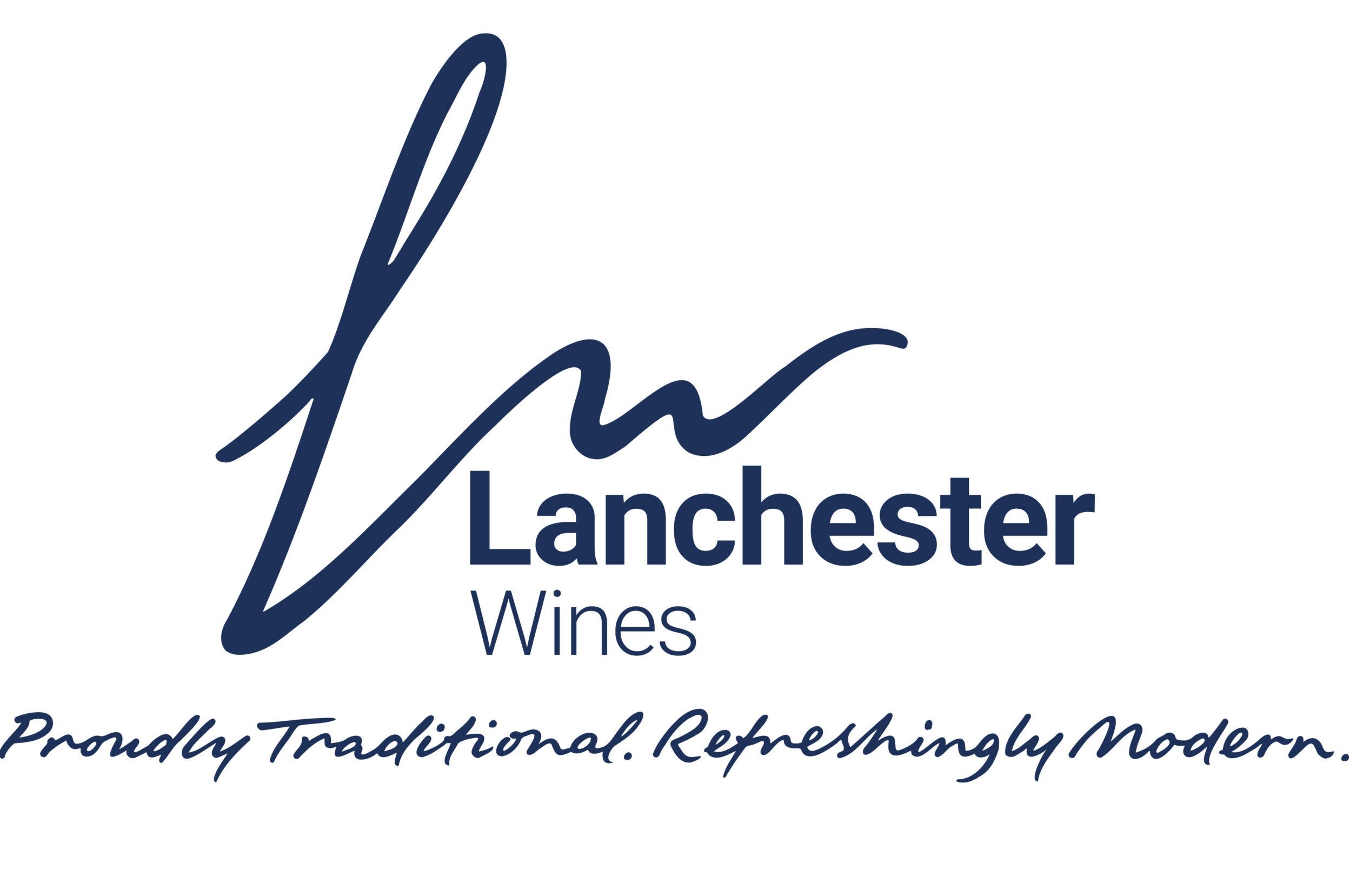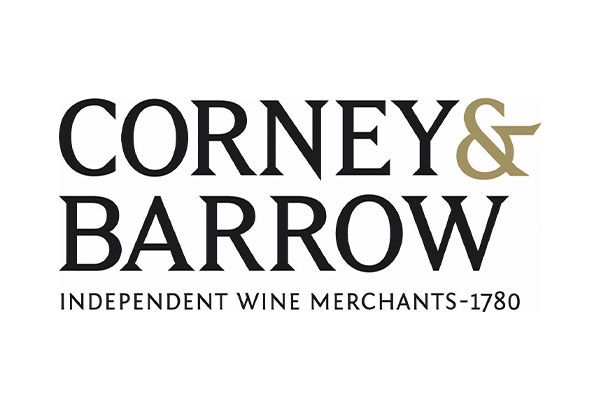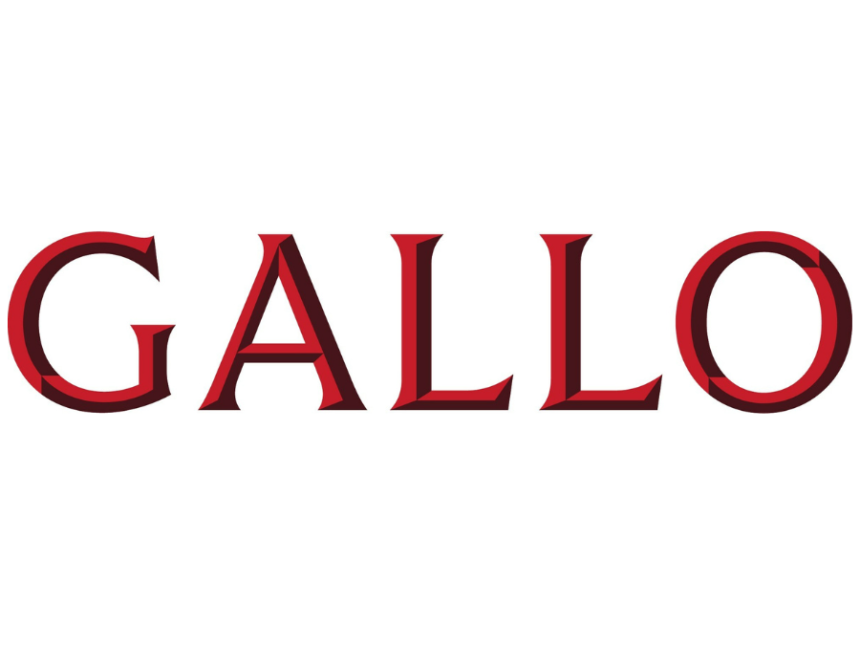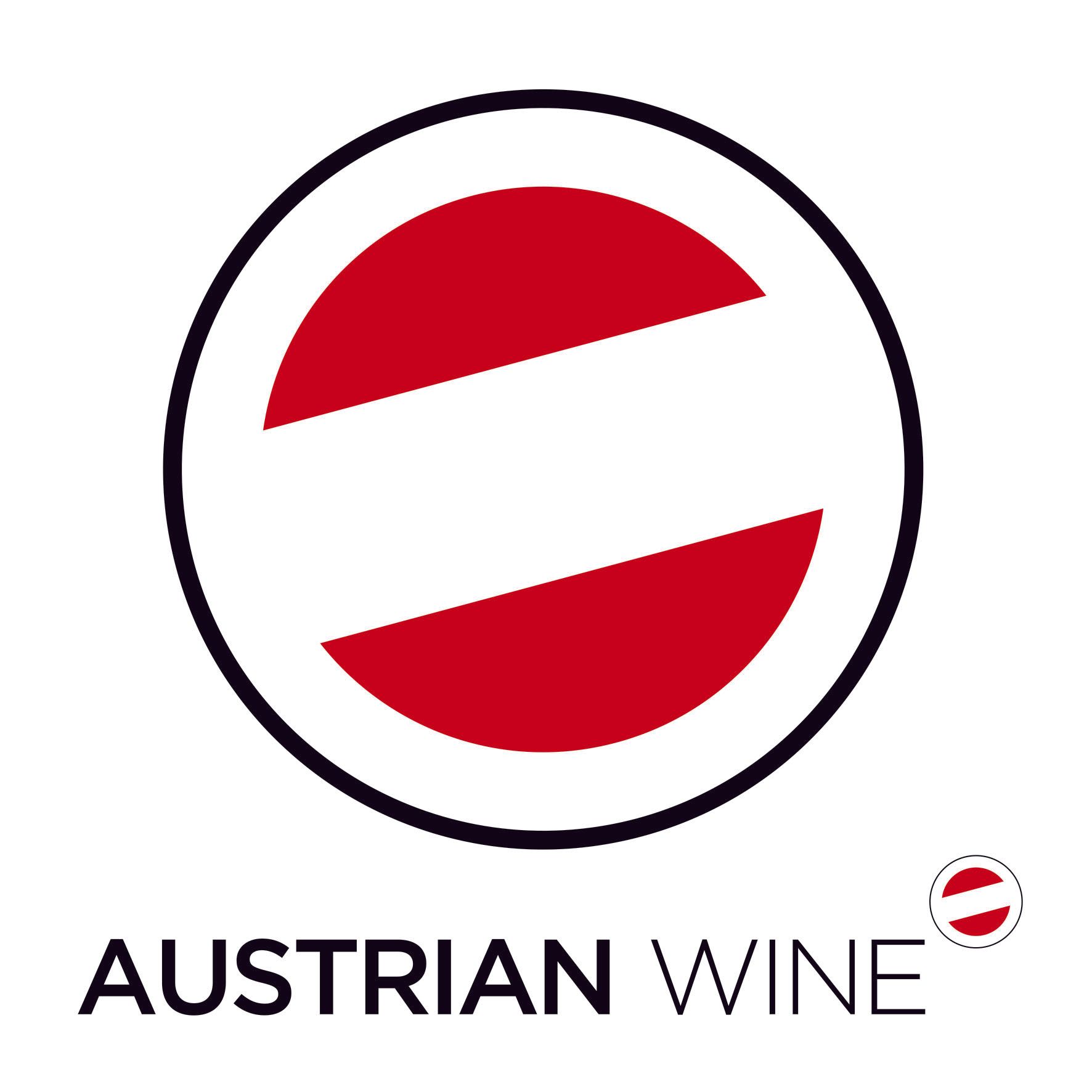Preconceptions about Provence rosé abound, perhaps more so than any other wine category: “The wines are always pale, pale pink”; “They are all pretty much alike”; “They are overpriced for what they are”; and “They are over-identified with celebrities,” (think Brad and Kylie, but others too).
Another, and one of the most enduring, is that “They should only be drunk in summer months, ideally in the sunshine.”

London Wine Fair masterclass on the region's diversity by Ray O'Connor MW
I was aware of all of these preconceptions before taking my seat at Ray O’Connor MW’s Provence Rosé Masterclass at the London Wine Fair. So, it was ironic that the LWF assistant pouring six samples should say:
“It’s been a busy day of pouring but this has been the toughest for getting the wines poured in the right order because all these wines look the same.”
The masterclass then proceeded to dispel those misconceptions.
A region like no other
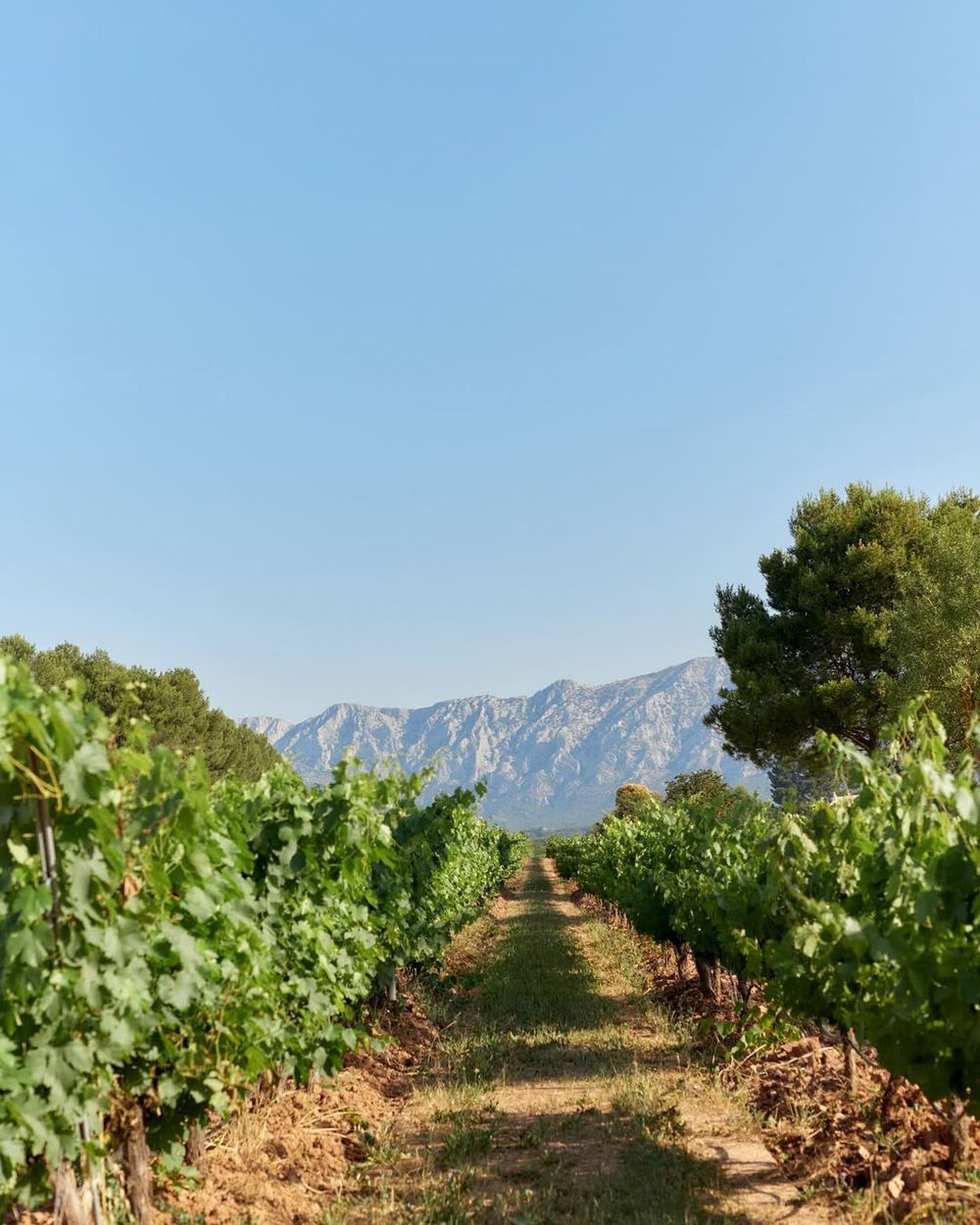
The varying topography and 11 grape varieties means rosés with multiple personalities
“Each of these wines is as unique as the region they come from, and Provence is a wine region like no other,” started O’Connor, “This isn’t a place where you see rows and rows of vines; instead, you have small blocks and terraces, scattered here and there, intermingling with forests, almond and olive trees, and fields of lavender,” he said.
Provence enjoys ample sunshine, some 250 days a year, with high summer temperatures that are alleviated by the winds which blow almost constantly throughout much of the year – indeed the region endures no fewer than 32 different winds, each with a differing impact on the vines.
This is a factor that vine-growers must contend with, along with the sometimes-violent downpours – it literally tends to never just rain but pours here. The topography of steep tree-covered hills and terraces can lead to significant differences in rainfall within short distances. All these factors, coupled with the influence of the Mediterranean, make Provence rosé unique and ubiquitous – almost 90% of the 174m bottles produced by the region’s 575 producers in 2022 is rosé, hailing from 77,800 ha of highly diverse terroir.
The dominance of Provence rosé is also exemplified by it accounting for a massive 43% of all the PDO rosé made in France and 6% of of all the rosé made globally.

"There’s so much biodiversity to be found and this is all reflected in the wines.” Ray O'Connor MW
O’Connor points out that this isn’t a global reputation gained overnight. Quality winemaking dates back here to before Roman times with the light-coloured clarete-style wine that was generally produced being a forerunner of today’s rosé. Techniques and quality were honed and refined during the era of the monasteries (up to the end of the 12th Century) and then re-emerged in modern times when leading Provençal families started to make wine in quantity, mainly for local consumption.
However, it was the 1970s which saw the emergence of modern Provence rosé as we now know it, with the emergence of the three AOPs: Côtes de Provence, the largest, in 1977; Coteaux d’Aix-en-Provence in 1986 and geographically in between the two, mountainous Coteaux Varois en Provence, in 1993. Each of these AOPs boasts various DGCs or sub-regions, with all of them all overseen by the CIVP (the Conseil Interprofessional des Vins de Provence) whose research into such matters as the best canopy management etc have helped combat some of the effects of climate change.
Family, larger producers and cooperatives deploy the region’s 11 red grape varieties (led by Grenache, Cinsault and Syrah) and some white ones led by Rolle (Vermentino) to the best effect afforded by soil, wind direction and other terroir characteristics. The result is a region which, according to O’Connor, “truly knowns its sh**”.
“Yes, Provence has strong brands and an iconic, rugged romantic image but it is the wine-growers that make this region tick, and the vineyards – there’s so much biodiversity to be found and this is all reflected in the wines,” he says.
Six Provence rosés that show differences in style
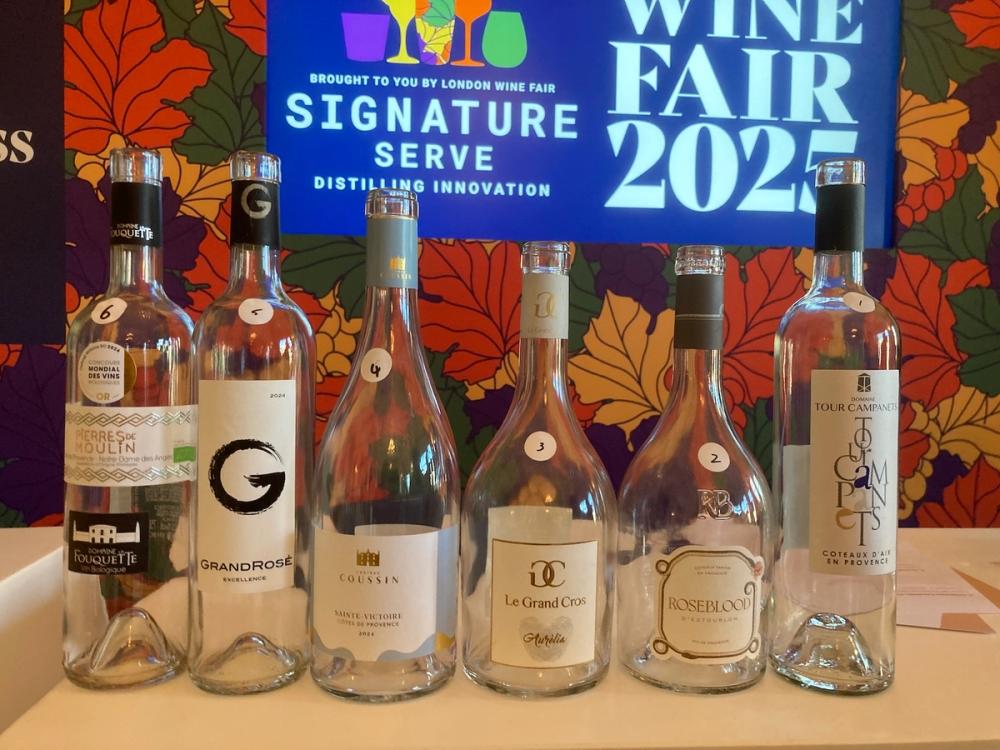
To demonstrate, O’Connor focused on six very different wines from across the region emphasising that differences in style are not defined by the AOP but by the specific terroir and wine-making approach of the producer. Seven subsequent wines currently unrepresented in the UK, and shown after O’Connor’s presentation, reinforced this message.
First off, Domaine Tour Campanets Cuvée Tour Campanets 2024 (Thorman Hunt), from the Coteaux d’Aix-en-Provence appellation. Very pale in colour (the quintessence of what many people think a Provence pink should look like), almost crystalline but very floral and fruity, with a long expressive finish: this is very fresh but with substance too, doubtless reflecting the clay-limestone soil; unusually 70% Grenache, 30% Syrah with no Cinsault; this is moreish.
So too was the Roseblood d’Estoublon, Roseblood d’Estoublon 2024, (Goedhuis Waddesdon), a best-seller at Majestic. This blend is predominately Cinsault, Syrah and Grenache, but with some Rolle and Semillon in the mix, from the far north-east of Provence (Coteaux Varois en Provence). Produced under the careful watch of Victor Joyeaux of Cloudy Bay fame, this is very fresh with tangy red fruit notes and a vibrant mineral backbone with a suggestion of honeyed citrus.
For those who like things a bit darker Aurélia Le Grand Cros Rosé 2022 (Swig), made from Grenache and Syrah, is for you; rose petal, exotic fruit and slightly nutty, toasted finish made this a more gastronomic style. From the Côtes de Provence.
In terms of colour Château Coussin, Château Coussin 2024 (Museum Wines) from Côtes de Provence Sainte-Victoire falls somewhere in between, almost apricot but with a full on apricot and strawberry nose, with a pomelo finish.
Crisp red fruit and salinity define the Le GrandRosé, GrandRosé Excellence 2024 (Private Cellar) from Côtes de Provence Pierrefeu is a surprisingly complex and slightly spicy wine made from grapes grown on vines more than 30 years old – distinctive and rounded.
And then back to very pale for Domaine de la Fouquette, Pierres de Moulin 2024 (Hennings Wine Merchants), with Mourvèdre making up 30% of the blend, along with Grenache (50%) and Syrah (20%), suggestions of pink grapefruit, lychee and passionfruit on the palate. From Côtes de Provence Notre-Dame des Anges.
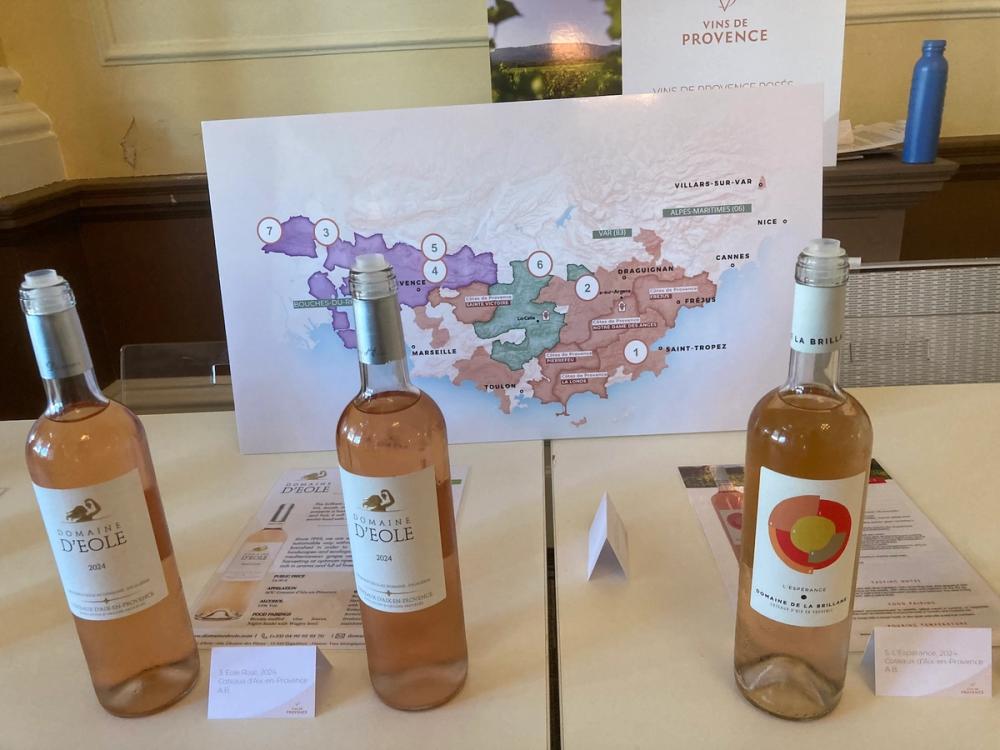
So, six very different wines, a situation echoed during a brief tasting of the seven unrepresented wines here – standouts including Clos Mirages Rosé 2024 from Côtes de Provence is very clean, mineral and expressive, and the surprisingly dark, vigorous Domaine d’Eole Rosé 2024 from Coteaux d’Aix-en-Provence has lovely fresh strawberries on the palate.
A region of multiple personalities
O’Connor concluded his masterclass by suggesting Provence Rosé has “multiple personalities, different colours and styles” and this is clearly true.

The CIVP has devised a useful colour palette chart showing the six different shades of colour that pink wines from the region show, from apricot and salmon at the dark end through pomelo and peach to lychee and mother of pearl at the pale end.
So, clearly not all the same colour. And not the same taste either. Typically priced at around £15-20 a bottle, good value for money too especially given most of the wines we tasted were small producers, hand crafted and often organic as well.
"Why is Provence rosé top of the charts? It leads the way in elegance and consistency of quality and has a strong appeal to those who like subtle aromatics, gentle acidity and texture,” O'Connor said.
I wouldn’t argue with that but would add that it is also a wine style that clearly isn’t standing still. More and more producers are switching to organic production, with sustainability lying at the heart of the wine industry here – over 60% of producers are organic with quite a few more in conversion.
Increasingly producers are working with new styles including more gastronomic, whilst clay amphora and concrete are increasingly being used alongside stainless steel - and in some cases wood - for vinification.
Indeed, even the grapes are evolving. The big three – Grenache, Syrah and Cinsault – are likely to continue to dominate blends, supported by Mourvèdre, Rolle and occasionally the highly distinctive but sadly quite scarce Tibouren.
However, since 2021 five hardy new varieties: from Greece, Moschofilero, Agiorgitiko and Xinomavro; and from Italy, Nero d’Avola aka Calabrese and Rouselli (a French variety that fell out of use) have been allowed, albeit in small quantities. These will support the main players, as the region attempts to future proof itself against climate change. This suggests that over time the profile of many Provence rosés will change again.
“This is a wine style that has transcended time and has proved itself over time,” says O’Connor. “The appeal is enduring.”


